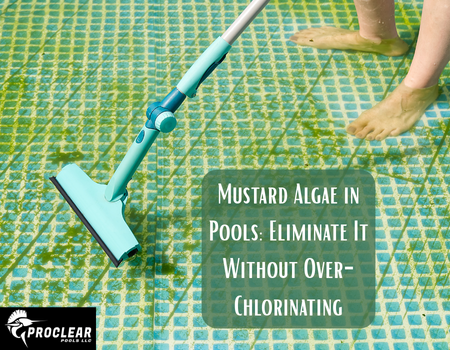Mustard algae—often mistaken for sand or pollen—is one of the most stubborn and frustrating invaders a pool owner can face. Unlike green algae, which floats and clouds the water, mustard algae clings to surfaces, particularly shaded areas, and resists standard chlorination. If you’ve tried shocking your pool repeatedly only to see that yellowish dust return, you’re not alone.
The good news? It’s possible to eliminate mustard algae without over-chlorinating your pool, which can damage equipment, throw off water chemistry, and make swimming uncomfortable. The key is a balanced, multi-step approach that combines thorough cleaning, targeted chemical treatments, and preventive measures.
What Is Mustard Algae, Really?
 Mustard algae is a form of yellow-green algae that thrives in warm, sunny climates—making pools in places like Arizona, California, Texas, and Florida particularly vulnerable. It’s different from other algae types in that it can survive even in well-maintained pools and often resists normal chlorine levels.
Mustard algae is a form of yellow-green algae that thrives in warm, sunny climates—making pools in places like Arizona, California, Texas, and Florida particularly vulnerable. It’s different from other algae types in that it can survive even in well-maintained pools and often resists normal chlorine levels.
Its powdery appearance usually starts on pool walls, steps, or floors—especially in shaded areas or behind ladders—and can easily be brushed away temporarily. However, unless treated correctly, it will keep coming back.
Why Over-Chlorinating Doesn’t Work Long-Term
The instinctive response to algae is usually to shock the pool. While superchlorination can kill mustard algae, overdoing it too frequently can:
- Throw your pool chemistry off balance.
- Damage sensitive components like seals and liners.
- Leave swimmers with skin and eye irritation.
- Encourage algae to adapt, making it harder to eliminate over time.
Instead, the smarter route is to use chlorine strategically in combination with other methods.
Step-by-Step: How to Eliminate Mustard Algae Without Over-Chlorinating
1. Clean Everything—Not Just the Pool
Mustard algae is known for its stubborn ability to attach to anything that goes into the water: swimsuits, pool toys, cleaning equipment, floats, brushes, and even robotic vacuums.
- Wash swimsuits in hot water.
- Soak pool toys and accessories in a diluted bleach solution or algaecide.
- Sanitize your cleaning tools by soaking them in chlorine water after each use.
This stops the reinfestation cycle many pool owners face after clearing the water.
2. Brush, Vacuum, and Filter
Use a stiff-bristle pool brush to scrub every surface—walls, ladders, lights, steps, and tile lines. After brushing, ensure that the pool is vacuumed thoroughly, to remove algae.
Run your filtration system continuously for at least 24–48 hours during treatment to trap any remaining spores. Clean or backwash your filter afterward to prevent contamination.
3. Shock Wisely
You will need to shock your pool, but not excessively. Here’s how to do it efficiently:
- Use a mustard algae-specific shock or algaecide, which is more effective than standard chlorine shocks.
- Follow manufacturer instructions carefully for dosage.
- Shock the pool in the evening to avoid rapid chlorine burn-off from UV exposure.
- Leave the pump running overnight and keep swimmers out for at least 24 hours.
If needed, a follow-up dose after 48 hours may help, but avoid repeatedly shocking without reassessing the root cause.
4. Balance Water Chemistry
Once you’ve treated the algae, test and adjust your pool’s water chemistry:
- pH: 7.2 to 7.6
- Total Alkalinity: 80–120 ppm
- Chlorine: 1–3 ppm (maintain at the higher end for a week after treatment)
- Cyanuric Acid: 30–50 ppm
A balanced pool makes it harder for mustard algae to return and easier for your sanitizer to work effectively.
Prevent Mustard Algae from Returning
After a mustard algae breakout, your pool may be more vulnerable in the future. Keep it protected by:
- Shocking your pool after storms, high temperatures, and periods of heavy use.
- Cleaning pool equipment regularly.
- Using a quality algaecide weekly as part of your maintenance routine.
- Running your filter at least 8–12 hours per day during hot months.
Also, be cautious about reintroducing anything that might have algae spores on it, including guests’ inflatables or unwashed swimwear.
Mustard algae is sneaky and persistent, but it doesn’t have to win. With the right strategy—thorough cleaning, targeted algaecide, smart chlorination, and consistent maintenance—you can clear it up without relying on harsh over-chlorination tactics.
Remember, the goal isn’t just to eliminate what you can see. It’s to remove the spores, sanitize everything they may have touched, and restore a chemical balance that makes your pool inhospitable to future growth. That way, you can enjoy clear, clean water all season long—without the yellow surprise creeping back.
